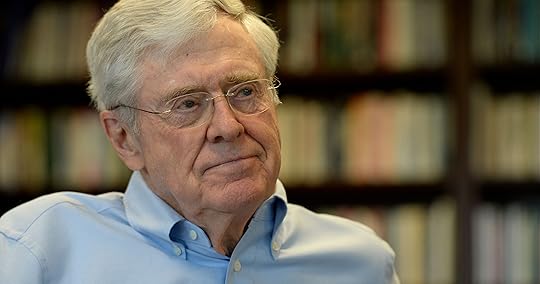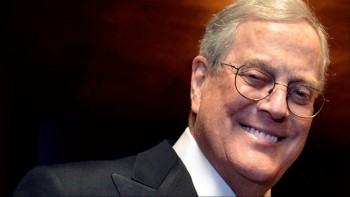What do you think?
Rate this book


464 pages, Hardcover
First published January 19, 2016
We can have democracy in this country, or we can have great wealth concentrated in the hands of a few, but we can't have both. - Louis D. BrandeisIt has been a consistent element of modern life in the USA that the public polls as more progressive than our elected officials. Given that in a democracy one would expect representatives to more or less reflect the views of the people who make up the population, and not speak in opposition to them, this seems surprising at first blush. Yes, we have our extremist elements, but by and large, the political position of the majority of the nation is a bit left of center. And yet, there has been a remarkable shift in the nation’s political direction. At least the political direction of the professional political class, elected officials, lawmakers, government executives, members of the judiciary, political operatives, lobbying organizations, interest groups. This pushing of the political gauge, this redefinition of what constitutes the center in American political thought, can only be understood by looking below the surface at actions that have been going on for decades, stealthily, effectively, dangerously.



The party’s platform was an almost exact replica of the Freedom School’s radical curriculum. It called for the repeal of all campaign-finance laws and the abolition of the Federal Election Commission (FEC). It also favored the abolition of all government health-care programs, including Medicare and Medicaid. It attacked Social Security as “virtually bankrupt” and called for its abolition too. The Libertarians also opposed all income and corporate taxes, including capital gains taxes, and called for an end to the prosecution of tax evaders. The platform called for the abolition too of the Securities and Exchange Commission, the Environmental Protection Agency, the FBI, and the CIA, among other government agencies. It demanded the abolition of “any laws” impeding employment—by which it meant minimum wage and child labor laws. And it targeted public schools for abolition too, along with what it termed the “compulsory” education of children. The Libertarians wanted to get rid of the Food and Drug Administration, the Occupational Safety and Health Administration, seat belt laws, and all forms of welfare for the poorThis is what they want. And this is how they have gone about getting it.
[In the late 1980s, Richard Fink], after studying the Kochs’ political problems for six months, drew up a practical blueprint, ostensibly inspired by [right-wing icon, economist Friederich] Hayek’s model of production, that impressed Charles by going beyond where his own 1976 paper on the subject had left off. Called “The Structure of Social Change,” it approached the manufacture of political change like any other product. As Fink later described it in a talk, it laid out a three-phase takeover of American politics. The first phase required an “investment” in intellectuals whose ideas would serve as the “raw products.” The second required an investment in think tanks that would turn the ideas into marketable policies. And the third phase required the subsidization of “citizens” groups that would, along with “special interests” pressure elected officials to implement the policies. It was in essence a libertarian production line, waiting only to be bought, assembled and switched on.In the same way that those seeking to promote war use mercenaries, so that voters need not be concerned about Johnny becoming cannon fodder in some pointless foreign adventure, the warfare that is politics has likewise been outsourced. Prevented by law from contributing mass quantities to your favorite tax cutter? Not to worry. Just set up a non-profit foundation and have the foundation redirect your contributions to Astroturf political creations where foundation money is magically transformed into a paid-in-full army of attack ads. And this is legal? Democracy? We doan need no steenking democracy.


If the estimates were correct the actual number of hard core Tea Party activist was not by historical standards all that large. But the professionalization of the underground infrastructure, the growth of sympathetic and in some cases subsidized media outlets, and the concentrated money pushing the message from the fringe to center stage were truly consequential.Toward the end of the book the rise of the influence of the Koch brothers is summarized in the following quotation:
Charles Koch's trajectory had been a longer climb, but it was hard not to marvel about how far he too had come from the days when he had haunted the John Birch Society Book Store in Wichita and teetered with the Freedom School and the Libertarian Party on the outermost fringe of political irrelevance. The force of his will combined with his fortune had made him one of the most formidable in modern American politics. Few had waged a more relentless or more effective assault on American's belief in government. He and his brother had built and financed a private political machine that had helped cripple a twice elected Democratic president and begun to supplant the Republican Party. Educational institutions and think tanks all over the country promoted his world view. Doubling as a talent pipeline, a growing fleet of non-profit groups mobilized public opinion behind his agenda. The groups trained candidates and provided the technological and financial assistance necessary to run state-of-the-art campaigns. The money they could put behind their chosen candidates was seemingly limitless. Congressmen, senators, and presidential hopefuls now flocked to their secret seminars like supplicants eager to please them in hopes of earning their support.
As The Washington Post’s Dan Balz observed, “When W. Clement Stone, an insurance magnate and philanthropist, gave $2 million to Richard M. Nixon’s 1972 campaign, it caused public outrage and contributed to a movement that produced the post-Watergate reforms in campaign financing.” Accounting for inflation, Balz estimated that Stone’s $2 million might be worth about $11 million in today’s dollars. In contrast, for the 2016 election, the political war chest accumulated by the Kochs and their small circle of friends was projected to be $889 million, completely dwarfing the scale of money that was considered deeply corrupt during the Watergate days.
During the next three decades, they contributed well over $100 million, much of it undisclosed, to dozens of seemingly independent organizations aimed at advancing their radical ideas. Their front groups demonized the American government, casting it as the enemy rather than the democratic representative of its citizens. They defined liberty as its absence, and the unfettered accumulation of enormous private wealth as America’s purpose. Cumulatively, the many-tentacled ideological machine they built came to be known as the Kochtopus.
On its own, in 2012 the Kochs’ network of a few hundred individuals spent at least $407 million, almost all of it anonymously. This was more than John McCain spent on his entire 2008 presidential bid.